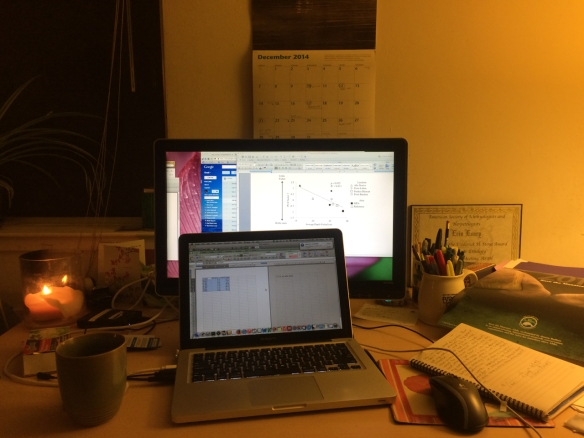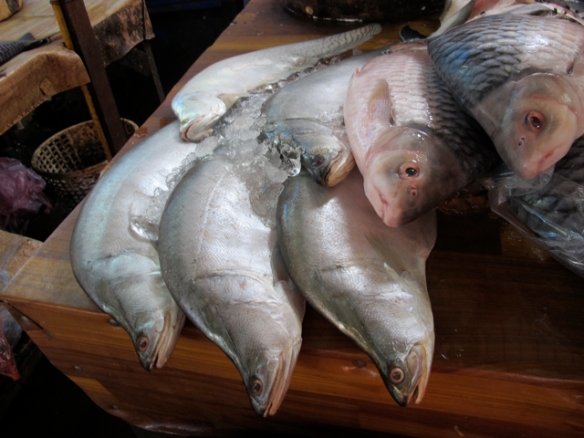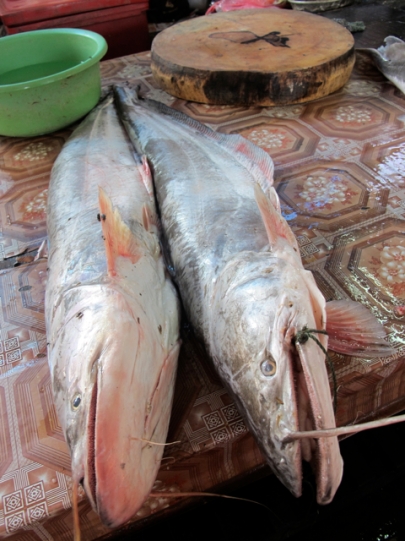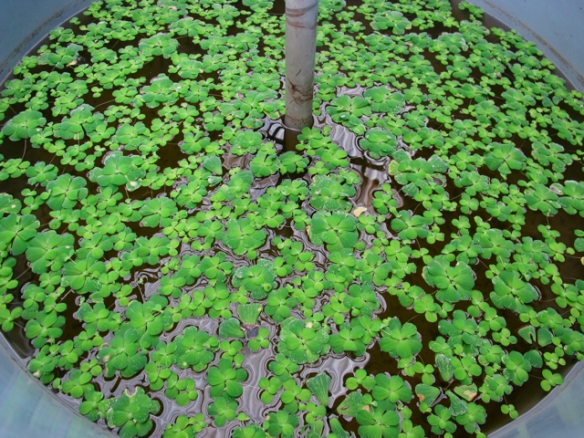I recently had lunch with one of my graduate school advisors to give her some reprints – hard copies of the paper we had published on my master’s thesis work. The project was years in the making, and had been built up in my mind as something practically unachievable, so it still seems surreal to me that I finally published my thesis in a scientific journal. It’s something that I think deserves more than a little reflection here in this space where I am charting my journey in science and writing and fish. This paper’s path to publication was certainly a circuitous and intermittent journey, with many fits and starts.
The paper was published in September 2015, four years and three months after I defended my thesis and completed my master’s degree at Moss Landing Marine Labs in the summer of 2011. The path to graduation was a challenging three-and-a-half-year journey in its own right that pushed and tested me on so many fronts. In the home stretch, it took everything in me just to finish my thesis presentation and format the final manuscript for San Jose State University, my home campus. By the time that was done, I was so ready to move on, so ready for something different – like diving headfirst into the world of science journalism. Almost immediately after finishing at Moss Landing, I went straight into a one-year science communication program at UC Santa Cruz. There I used every ounce of brainpower to learn how to translate science into popular writing. Between the crazy schedule of classes and internships and deadlines, the thought of picking up my thesis just seemed like too much. As far as I was concerned, I still needed a mental break from it. And that need for a break continued even as I finished the science writing program and started my current job.
Throughout my graduate career, I had heard many a cautionary tale of students who invested years into rigorous scientific work for their theses, studies worthy of publication, and who maybe came very close to publishing, but never did. What a shame, I would think. I vowed to myself that I would not become one of those cautionary tales. But the other take-home message was: do it soon. Don’t let too much time pass before you submit your manuscript for publication, or it may never happen. This is where I hit my obstacles in the seductive guise of “taking a break” – break that became increasingly harder to return from. My housemates are currently Ph.D. students at UC Santa Cruz, where their advisor will not sign off on their dissertation until every chapter has been submitted to a journal. I watched how this requirement pushed my housemate in the grueling final stretch of her dissertation – and she did it, she submitted every chapter. Because publishing is optional at MLML, the responsibility usually falls on the student to make it happen. Some advisors are more involved than others as far as prodding their students towards publication. One of my advisors once told me, “I know I don’t need to nag you since I’m sure that you’ll get this done.”
As the months and then years went by, I sometimes wished someone would nag me about publishing my thesis – just to have some proof that this undertaking mattered to anyone besides me. I eventually realized that no one was going to do this for me. Just like finishing the research had been a grueling test of my own perseverance, getting the publication over the finish line would be the same – if it was something I really wanted, I was then one who had to find a way to make it happen. But this looming responsibility was a hard one to face. Every once in a while, the guilt and weight and fear of submission would rear up in me – sometimes while I was out for a jog on West Cliff Drive and caught sight of the smokestacks in Moss Landing across the bay. I would eventually put those nagging fears aside, and one day I realized with a sensation of panic that it was getting easier and easier to quiet my internal nagging, to live with the fact that my thesis wasn’t published. My window of opportunity was closing. The scales were tipping more towards me not publishing as opposed to publishing. Each day and year that went by would make it even harder to resurrect this work. In the fall of 2014, I attended a friend’s thesis defense that had been a long time in coming, and I received some reassurance from another former student: there was a home for my research out there somewhere. Even if it wasn’t in my first choice of a journal, even if it ended up in some obscure technical publication – as long as the analysis was sound, my paper would find a home.
These were words I needed to hear because they got to the heart of what was setting me back – the fear of rejection. Rejection is just as much a part of the scientific publishing world as it is in the popular science writing world. I had learned to become more familiar with the latter, but the thought of rejection for my first scientific undertaking was hard to bear. Far from the detached scientist, I was emotionally invested in this project. It had been part of my life for more than three years, and it was so difficult to disentangle myself from the manuscript – even though at its heart, science is supposed to be an objective undertaking. And because of everything I had poured into the project and receiving my degree, I realized I also owed it to myself to try to publish it. Because this is something I had promised myself I would do, my biggest failure would be not to try, to let the fear hold me back. So I set myself a deadline: submit by the end of 2014. It just had to happen, or it might never happen.
So began a push that lasted about two months. It was amazing how any minor obstacle threatened to become a major setback at every turn. Although San Jose State required me to format my thesis manuscript according to a journal’s guidelines so that it would in theory be ready for submission, I ran into my first stumbling block soon after graduation: I realized my manuscript was nearly 50% too long compared to the suggested word limit for the journal I had in mind. Rather than trying to parse my thesis into chapters, I had combined everything into one long manuscript, since everything was related. Figuring out how to pare it down was enough to discourage me for six months, a year, two years. Finally I got down to the business of cutting things out, only to put them back in. My final draft was still over the suggested word limit, but at that point I needed an editor to tell me what else to take out.
Other little things loomed large before me. I needed to change the font on one graph; I needed to change the depth units from feet to meters in another. It’s incredible how these things became monolithic in my mind, an insurmountable molehill turned mountain. The thought of tackling these problems filled me with anxiety because I wasn’t sure where to start. But with my deadline before me, I made a list and started carving out time in the evenings, trying to cross things off. I lit candles, I drank tea, trying to quiet the raging fears in my mind. Finding the right data files for the graphs in question took a fair amount of digging, but once I found them, the actual changes were straightforward and simple. I remember laughing to myself as I looked at the finished graph on my computer screen, feet having successfully been replaced with meters. This is what has been holding me up for months and years? Was it really that hard?
It was that hard because each little thing required digging deep into my emotional reserves. I agonized over the cover letter to the journal, worried that even the slightest misstep would be grounds for rejection. But at last, with everything in order, I submitted the paper from my parents’ dining room table on December 30, 2014 – a whole day ahead of schedule! The succinct online message that confirmed my submission hardly seemed worthy of the momentous occasion, but there it was – proof. Then the waiting game began.
The reviewer comments arrived in March while I was traveling in Vietnam with my family. I opened up my computer at our quaint lodge in Da Lat and stared at the email, slightly terrified to open it. As I skimmed through it, I saw the email provided the reviewer’s comments, but said nothing about the paper being officially accepted. My advisers later assured me this was implied, but I still felt uneasy without the paper’s acceptance spelled out explicitly. One reviewer had provided extensive comments, and the other had written a mere two sentences, saying that the manuscript needed work on the flow. For better or worse, I had just the one set of comments to work through. Some changes were small, but others seemed substantial: my paper was analyzing the diet of the gopher rockfish, and the reviewer questioned how I had grouped the prey items, saying the classification was too broad. S/he suggested running the analysis with new prey groupings.
Panic rose in my heart: if any additional analyses were required, that might set me back to the point of derailing the whole endeavor. I consulted with my advisers, who were all coauthors on the paper, and they felt confident I could defend why I chose the prey groupings I did. We went line by line through each of the comments, and I typed notes furiously. Having published dozens, probably hundreds, of papers among them, my coauthors seemed much less worried about the whole process than I did – they assured me that all of the comments I received were constructive, that they weren’t pointing out big holes or flaws with the paper. They felt confident that the paper would be accepted once I addressed each point, but I stuck by my conviction that I would believe it when I saw it.
One of my fears was that I would be asked for some piece of information that I could no longer find or remember, given all the time that had passed. For this reason, I was scared to delete a single computer file or recycle a single paper related to my thesis for years. Then, during the second round of comments I received from the managing editor, I was asked about the percent of variability in the dataset explained by a particular analysis. This would be a single number on the output of a single analysis – but which one? I had run dozens of versions of that analysis, and of course the one that I needed I couldn’t find. I had been very good about labeling and organizing some of my results, but not all – and this particular analysis was in the “not” pile. I began a deep search through my computer files. I no longer had a license for the software I had used for the analysis in grad school, but mercifully I still seemed able to open the output files I had generated – although they threatened to freeze my computer each time they loaded. I combed through file after file, and finally found that one little number I was looking for. Five percent! It was only five percent! The smallness of the number was a sharp contrast to the immense relief I felt being able to insert it into the manuscript.
Finally, on July 10, 2015, after two rounds of comments and edits, I received the email from the journal I had been waiting for. The subject line said, “Final acceptance,” and the message read, in part, “All the comments and suggestions have been thoroughly addressed and the manuscript is ready for publication. I believe the readers of MEPS will by very interested in reading this excellent paper and learning from the results of your efforts…Congratulations.” A month later, we received a set of proofs with the paper laid out as it would appear in the journal. And on September 29, my paper made its debut in Issue 539 of the journal Marine Ecology Progress Series. It was done.
But not quite done – at last I could do all of the little celebratory things related to publishing this paper. I had received a stipend during my final year of grad school from California Sea Grant (after two unsuccessful attempts at applying for the funding – so really I was no stranger to scientific rejection after all). The program periodically sent emails to their mailing list reminding former grantees to share any publications that had resulted from their work. One of the first things I did after the paper was published was proudly send an email to the Sea Grant office with the journal manuscript attached. I had fulfilled my obligation to the funder, to the project, and most importantly, too myself. I wrote a post on Facebook about the paper that I had been dreaming of crafting for years, and also shared the paper on the Facebook page of the collaborative fishing program that had helped me collect my samples. I sent an email to my family, added the publication to my resume, and at last I could unceremoniously part with the piles of notes and data sheets associated with my thesis – especially timely, since my parents had sold my childhood home, and I needed to do some serious purging of my “archives.” Months later, I have finally delivered the paper copies to all of my coauthors. All the loose ends had been finally tied up and tucked away.
As part of this celebratory sharing process, I also uploaded my publication to a few academic sharing sites: ResearchGate and Academia.edu. When I recently signed up for a Google Scholar citation alert, I realized that my paper even received its first citation in February of this year! It probably doesn’t hurt that one of my coauthors is also a coauthor on this citing paper. I downloaded the manuscript and eagerly scanned it – there was my name in the list of references, there it was cited in the text – as an example of how a species that is considered a “generalist” may actually consist of several differing “specialists.” It was like when I saw my name in print in the Los Angeles Times, quite unbelievable, and not fully real. But there it is – I am a published, cited scientist.
From start to finish to publication, my master’s thesis has been my biggest test to date of how to take responsibility for a project and see it through, how to self-motivate through the difficult stretches. The final push to publish took many winter evenings, and many glasses of wine. It took me three and a half years from the time I graduated to actually submit my thesis to the journal, and it was published nine months after I submitted it – more than four years in total, but now it is out in the world for anyone to read. One of my advisors fortunately had funding to pay for the hefty publication fees, including paying extra to make the work Open Access. After all the effort it took to make the research happen, and finally get it into publication, I really wanted to make sure that anyone who wanted to read the study could easily access it, free of charge.
The research can now take on a life of its own – who knows, maybe someone will dig it up in 20 years and decide to repeat my study, to see what gopher rockfish are eating in marine protected areas, and whether anything has changed. I may publish other scientific papers over the course of my career, but I doubt if any will be as satisfying. This journey has been my first true test as a scientist. They say that closure is something you have to make for yourself. Now that my work is out in the world, and I have thoroughly marked and reflected upon its journey, at last I can say I can close the books on this project – and can move on to the next chapter.


























